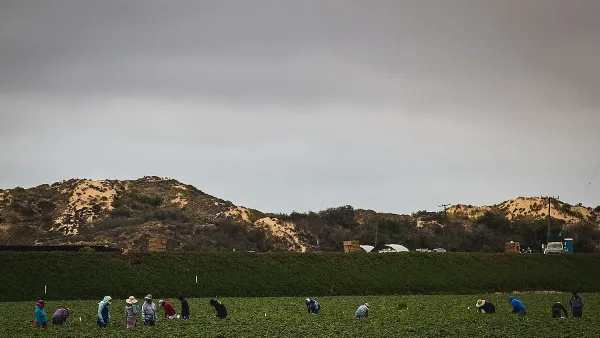Not only are more Californians leaving the state for greener pastures than those moving to it, but the birth rate is dropping as well according to a detailed new demographic report by county on 2010-2011 growth by the state Department of Finance.
The Dept. of Finance report covers the period from July 1, 2010 to July 1, 2011. Total population growth was 260,000. Growth is now entirely dependent on new births as net migration (foreign and domestic) resulted in a loss of 22,000 residents.
"Continuing a trend of fewer immigrants, fewer births and more Californians moving elsewhere, the state's population grew by just .7 percent in the last year, a slight increase over last year's growth rate of .65 percent.
California now has 37.5 million residents but the state population is growing at one of the slowest rates in its history, according to new estimates released Tuesday by the Department of Finance."
"We always had a fairly high fertility level. Now it's dropped below replacement levels," said state demographer John Malson.
"California's child-bearing women now have an average of 1.9 children, which is below what is considered the replacement level of 2.1," he said.
From DOF press release (PDF): "The natural increase of 283,000 in the past year is composed of roughly 511,000 births minus 228,000 deaths. Net outmigration reduced the population by 22,000 residents. Net migration includes all legal and unauthorized foreign immigrants, residents who left the state to live abroad, and the balance of hundreds of thousands of people moving within the United States both to and from California."
From CBS Evening News: Unemployment leading to California exodus (video + text): "In 2010, Texas gained nearly 75,000 new residents, while California lost nearly 130,000. The biggest state to state shift in the country was people leaving the Golden State and heading to the Lone Star state."
Thanks to MTC-ABAG Library
FULL STORY: California population grows modestly to reach 37.5 million

Planetizen Federal Action Tracker
A weekly monitor of how Trump’s orders and actions are impacting planners and planning in America.

Restaurant Patios Were a Pandemic Win — Why Were They so Hard to Keep?
Social distancing requirements and changes in travel patterns prompted cities to pilot new uses for street and sidewalk space. Then it got complicated.

Map: Where Senate Republicans Want to Sell Your Public Lands
For public land advocates, the Senate Republicans’ proposal to sell millions of acres of public land in the West is “the biggest fight of their careers.”

Maui's Vacation Rental Debate Turns Ugly
Verbal attacks, misinformation campaigns and fistfights plague a high-stakes debate to convert thousands of vacation rentals into long-term housing.

San Francisco Suspends Traffic Calming Amidst Record Deaths
Citing “a challenging fiscal landscape,” the city will cease the program on the heels of 42 traffic deaths, including 24 pedestrians.

California Homeless Arrests, Citations Spike After Ruling
An investigation reveals that anti-homeless actions increased up to 500% after Grants Pass v. Johnson — even in cities claiming no policy change.
Urban Design for Planners 1: Software Tools
This six-course series explores essential urban design concepts using open source software and equips planners with the tools they need to participate fully in the urban design process.
Planning for Universal Design
Learn the tools for implementing Universal Design in planning regulations.
Heyer Gruel & Associates PA
JM Goldson LLC
Custer County Colorado
City of Camden Redevelopment Agency
City of Astoria
Transportation Research & Education Center (TREC) at Portland State University
Camden Redevelopment Agency
City of Claremont
Municipality of Princeton (NJ)



























